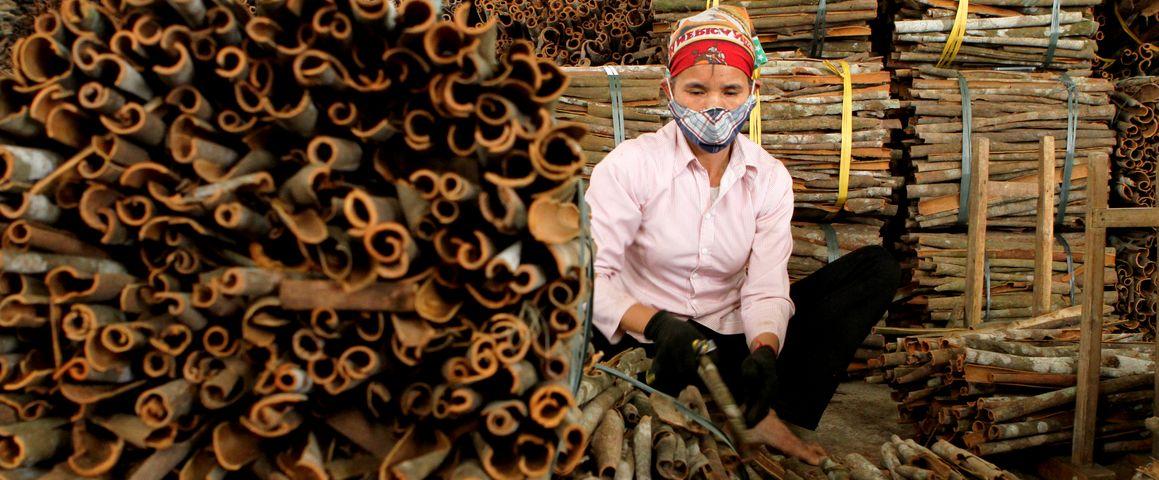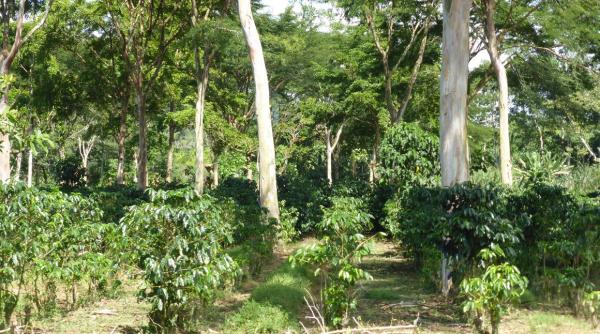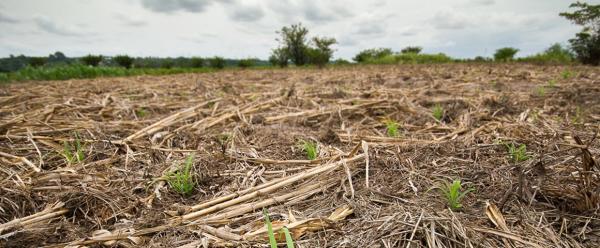Call to action 16 April 2025
- Home
- Press area
- Press releases
- IG Independent Dialogue UN Food Systems Summit
Geographical indications: promoting territorial specificities for more sustainable food systems

Produced in Vietnam, Văn Yên cinnamon stands out for its slightly sweet-spicy flavour and aroma. Eight municipalities in the Văn Yên district benefit from a geographical indication, and produce 7 000 tonnes of high-quality bark yearly © V. Bonneaud, CIRAD
“A geographical indication recognises, protects and safeguards the reputation of products derived from knowledge and know-how rooted in the history of a community and a territory”, says Claire Bernard-Mongin, a researcher at CIRAD specialising in GIs. “It is a collective intellectual property right, guaranteed by the state, which requires coordination between the operators within a territory around the practices that give the product its specificity. Unlike commercial models, which standardise products and production methods, GIs can promote a plural quality, reflecting the diversity of territories and human communities”.
During the Independent Dialogue, discussions focused on the role of GIs in:
- Ensuring access to markets and to fair and equitable value chains, with the goal of empowering local producers;
- Developing quality management, traceability and consumer protection;
- Protecting local natural heritage, environment and biodiversity:
- Promoting cultural identity and ensuring food and dietary diversity.
As an outcome of the dialogue, the participants recognised that the characteristics of GIs mean that, under certain conditions, they can be effective tools to improve food system sustainability . The economic development of GI products is an interesting path towards the protection of natural resources, biodiversity, cultural identity and food diversity. Provided it is underpinned by a reliable quality control system, and that it ensures equitable distribution of the benefits between the different actors in the value chain, this added value can also encourage territorial governance. This virtuous circle then fosters local collective arrangements for the resolution of global challenges, such as production system sustainability or adaptation to climate change.
“The participants also highlighted the potential of social networks and other discussion platforms, which offer new possibilities for organisation and cooperation”, adds Claire Bernard-Mongin. “For example, telling the story of a product and its specificities, showcasing its territory of origin and local know-how, etc. Social networks bring together communities around consumption models that care about the origin of food and its production conditions”.
Finally, in a world 2.0, innovation in terms of traceability and control of GI products is a crucial dimension for the development of trade in these products. It encourages cooperation between countries to tackle fraud and to protect the reputation of GIs, especially with the development of food e-commerce, which has taken off since the onset of the COVID-19 pandemic.
GIs, agroecology, etc., these territorial approaches to food systems, driven by civil society, are a game-changer. But they still need to find their “voice” in the forthcoming UN summit, in order to contribute to a collective response capable of delivering the urgent changes required.
What is a geographical indication?
A geographical indication identifies a product that has a specific geographical origin from which it derives qualities and a particular reputation. These qualities are the result of natural and human factors. They are based on the knowledge, practices and know-how common to a community in a given territory. The rules for developing a GI are set out in specifications and are subject to controls, carried out by an independent body. A geographical indication thus protects the reputation of a product, and is used to promote a collective good intrinsically linked to a territory.



























